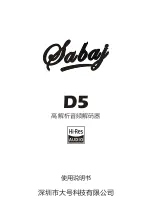
AC112Q-3, AC125Q-3, AC150Q-3, and AC165Q-3 Operations Manual.... 48
GENERATOR FREQUENCY ANALYSIS DISPLAY
Generator MIN Frequency: XX.XXHz
Generator MAX Frequency: XX.XXHz
Refresh Exit
CONVERTER OUTPUT IMPEDANCE CONTROL
Nominal Impedance (Zo) Duty Cycle: 50%
Transfer Impedance Duty Cycle: 100%
More Less Forward Back Exit
7.4
GENERATOR FREQUENCY ANALYSIS
Press the
SYSTEM STATUS + GENERATOR POWER
buttons to access the Generator
Frequency Analysis Display. Used for observing lifetime generator frequency range.
7.5
CONVERTER OUTPUT IMPEDANCE CONTROL
Press the
SHORE POWER+ F3
(Master converter) buttons to access the CONVERTER
OUTPUT IMPEDANCE CONTROL display.
Press the More
(F1)
button to increase the setting, the Less
(F2)
button to decrease the setting, the
Forward
(F3)
button to advance to the Transfer Impedance setting, the Back
(F4)
button to return
to the Nominal Impedance setting, and the Exit
(F5)
button to save the settings and exit.
Default
Range
Increments
Nominal Impedance Duty Cycle
50%
0 - 100%
1%
Transfer Impedance Duty Cycle
100%
0 - 100%
1%
Application: if loading-based, line-drop losses in a yacht are such that locations remote of the
converter and Ship's Bus experience undesirable, lower-than-expected voltages, the Nominal
Impedance Duty Cycle can be lowered via this control to increase output voltage. AGC (Automatic
Gain Control-see page 51) must be disabled when using this function or the modified voltage level
will be re-compensated by it. Initially, a small change (start with 5%) should be used in conjunction
with re-measurement at the remote location to determine the correction needed. Drastic changes
in Duty Cycle will result in equally drastic voltage changes. Transfer Impedance is usually only
modified by factory trained personnel when commissioning a converter. It can be used to fine-tune
the Seamless Transfer function.
















































